Potrebujeme váš súhlas na využitie jednotlivých dát, aby sa vám okrem iného mohli ukazovať informácie týkajúce sa vašich záujmov. Súhlas udelíte kliknutím na tlačidlo „OK“.
ASTM G156-09
Standard Practice for Selecting and Characterizing Weathering Reference Materials
Automaticky preložený názov:
Štandardná prax pre výber a charakterizovanie poveternostných vplyvov, referenčné materiály
NORMA vydaná dňa 1.6.2009
Informácie o norme:
Označenie normy: ASTM G156-09
Poznámka: NEPLATNÁ
Dátum vydania normy: 1.6.2009
Kód tovaru: NS-57464
Počet strán: 4
Približná hmotnosť: 12 g (0.03 libier)
Krajina: Americká technická norma
Kategória: Technické normy ASTM
Kategórie - podobné normy:
Anotácia textu normy ASTM G156-09 :
Keywords:
accelerated-aging, analysis of variance, exposure, round-robin, weathering reference material, Accelerated aging/testing, Consistency, Exposure tests, Reference materials (RM), Round-robin testing, Variance, Weathering, Accelerated aging/testing, Consistency, Exposure tests, Reference materials (RM), Round-robin testing, Variance, Weathering, ICS Number Code 19.040 (Environmental testing)
Doplňujúce informácie
| Significance and Use | ||||||||||||||||||||||||||
|
Weathering reference materials are used in laboratory accelerated exposure tests to verify consistency among tests run at different times and in different laboratories, using the same exposure conditions. Specifications defining consistency of exposure conditions are based on the property change of a reference material after a defined period of time. Some weathering reference materials are used to define periods of exposure. Specifications calling for use of these materials require the material to be exposed until a defined change in the weathering reference material is achieved. Specifications are usually based on results for a single lot of the weathering reference material. When a new lot of the reference material is introduced, round-robin studies are necessary to compare the new and old lots and to establish appropriate limits for expected performance of the new lot. Note 2—An example of the use of a clear polystyrene reference standard for this purpose is given in SAE J1885 and SAE J1960. Note 3—Some weathering reference materials (for example blue wools) are also used to define periods of exposure. Although not specifically covered by this standard, the procedures described for characterizing a reference material used to monitor consistency of exposures are also generally applicable to characterizing reference materials used to define periods of exposure. It is important to test the consistency of exposure in the laboratory accelerated device with a weathering reference material that responds to the test conditions similar to the way the test materials respond. Therefore, the weathering reference material should be sensitive to the spectral region of the light source mainly responsible for producing degradation in the test materials to provide the most meaningful evaluation of exposure test consistency. The weathering reference material should also provide information on consistency of temperature and humidity conditions if the latter are important factors in degradation of the test materials. Note 4—Material homogeneity can also be an important factor in selection of a weathering reference material, particularly if weathering is initiated by the radiation absorbed by impurities as is the case in aliphatic type polymers exposed to radiation longer than 300 nm. The measurement of the characteristic property of a weathering reference material can be subject to error depending on the instrument and the procedure used to measure the property. It is important to develop measurement procedures that are clear and which minimize chances for operator misinterpretation. It is also important to determine the level of variability caused by measurement of the characteristic property. When a reference material is used to monitor or specify the consistency of an exposure test, it is important that any specification limits defined by changes in the reference material be based on a sound statistical analysis of results from a properly designed round-robin experiment. This practice provides a procedure which can be followed to set up the round-robin, analyze results, and establish reasonable limits of change in the characteristic property of the reference material that can be used in specifications. The results obtained according to this practice are valid only for the exposure cycle used for the round-robin and cannot be applied to the same weathering reference material used in a different exposure cycle. The change in characteristic property of a reference material may be affected by the placement of the reference material in the exposure device. This is often due to variations in light intensity and temperature within the allowed exposure area. Random placement of replicate specimens of the weathering reference material through-out the allowed exposure area provides the best indication of the overall consistency of the exposure test. Note 5—In some cases, procedures require exposure of a weathering reference material at a specific location within the exposure device or chamber. Results for a reference material used in this way may not provide an accurate representation of the exposure conditions in other positions within the device. |
||||||||||||||||||||||||||
| 1. Scope | ||||||||||||||||||||||||||
|
1.1 This standard describes the criteria to be used for selection of a weathering reference material (WRM) and procedures to be used for determining within lab and between lab tolerances of changes in measured properties of a reference materials. This standard also describes a procedure for comparing different lots of the same type of a reference material. Note 1—Examples of laboratory accelerated tests in which a weathering reference material could be used to monitor consistency are exposure tests such as those described in Practices G 152, G 153, G 154, and G 155and other standards in which tests conducted according to these standards are referenced. Examples of outdoor exposures where a weathering reference material could be used to monitor consistency are those conducted according to Practices G 7, G 24, or G 90. A reference material can also be used to monitor consistency of exposure or conditioning test that do not involve exposure to light. 1.2 Weathering reference materials are most often used to (1) monitor consistency of conditions in exposure tests, (2) to determine the time or radiant exposure at which test materials are evaluated, (3) as a reference material for comparing to test materials exposed at the same time. Weathering reference materials cannot be used to classify or characterize the relative severity of any exposure test because of the large variability in material responses to the effects of light, heat, and water. 1.3 This practice does not cover control materials which, by definition are selected to be of similar composition and construction to the test materials, and are exposed at the same time as test materials. 1.4 This practice provides an outline of experiments required to determine how the measured properties of the reference material change as a function of exposure to specified test conditions. It includes establishment of reproducible measurement procedures, determination of the critical spectral region in the light source causing the changes, and effects of other critical exposure stresses such as temperature and moisture. |
||||||||||||||||||||||||||
| 2. Referenced Documents | ||||||||||||||||||||||||||
|
Podobné normy:
Historická
1.7.2014
Historická
1.4.2012
Historická
1.11.2013
Historická
1.11.2012
Historická
1.2.2013
Historická
1.4.2012


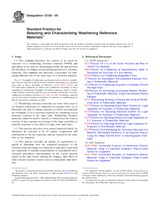
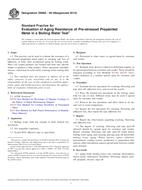 ASTM D6665-09(2014)..
ASTM D6665-09(2014)..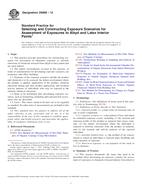 ASTM D6669-12
ASTM D6669-12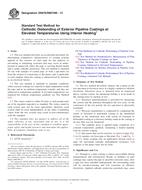 ASTM D6676/D6676M-13..
ASTM D6676/D6676M-13..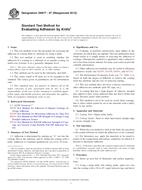 ASTM D6677-07(2012)..
ASTM D6677-07(2012)..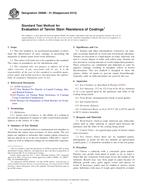 ASTM D6686-01(2013)..
ASTM D6686-01(2013)..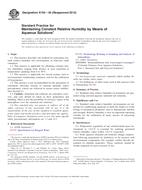 ASTM E104-02(2012)..
ASTM E104-02(2012)..
 Cookies
Cookies
